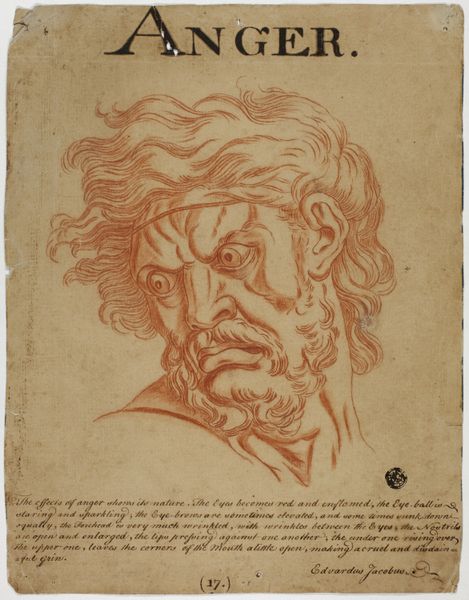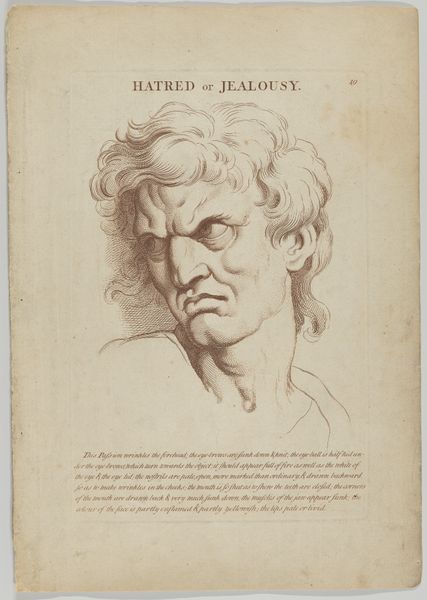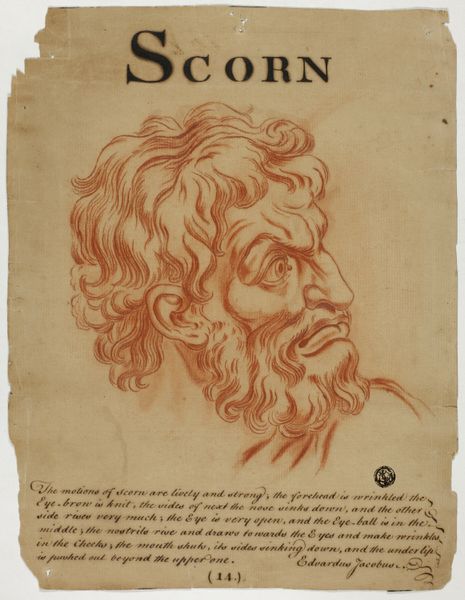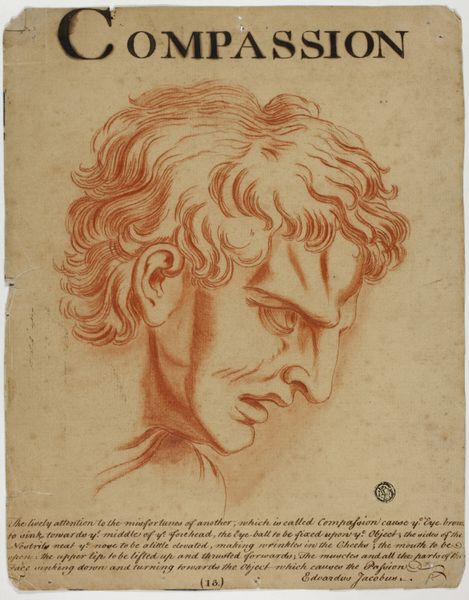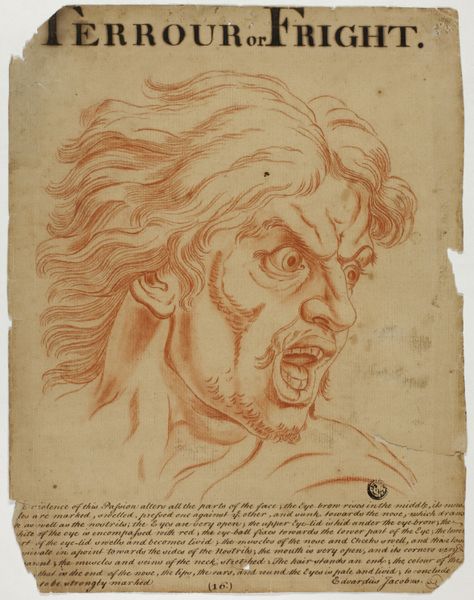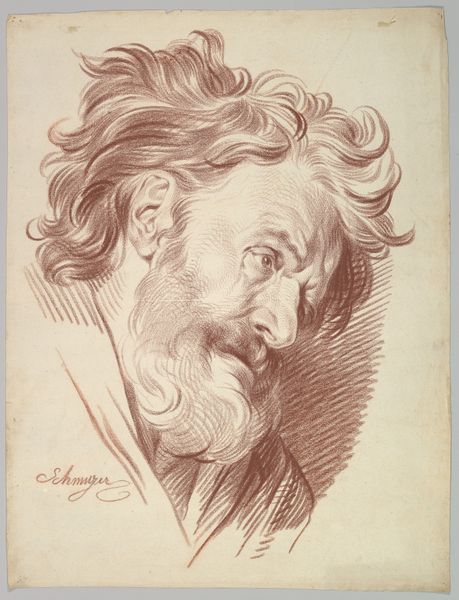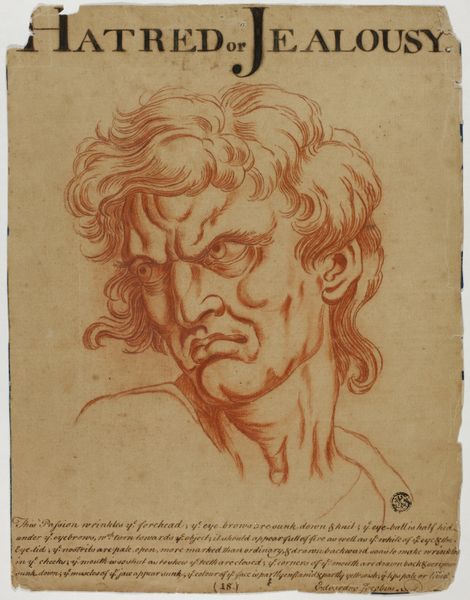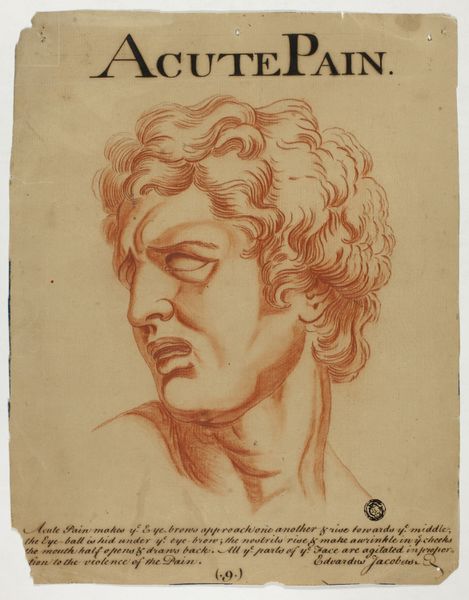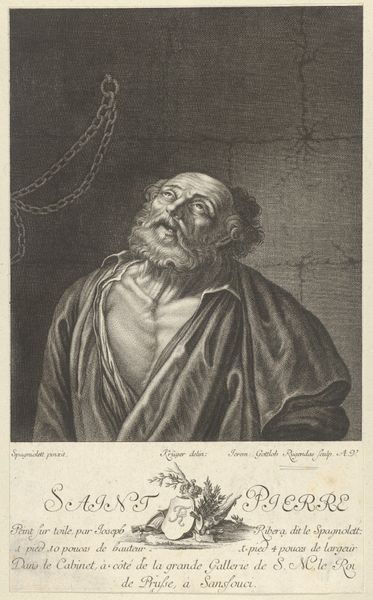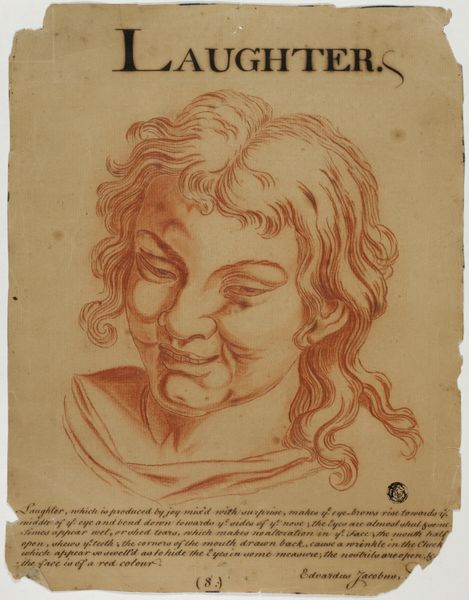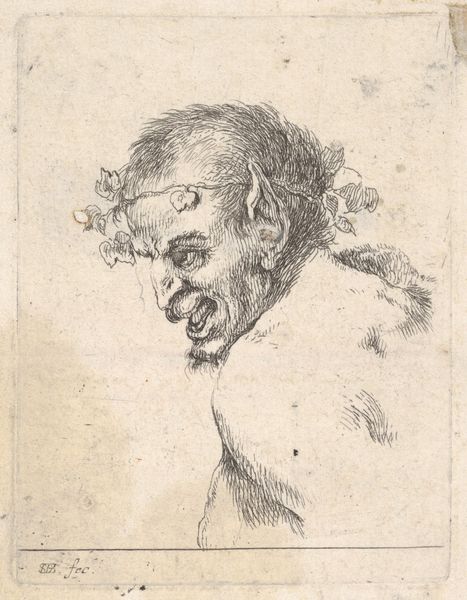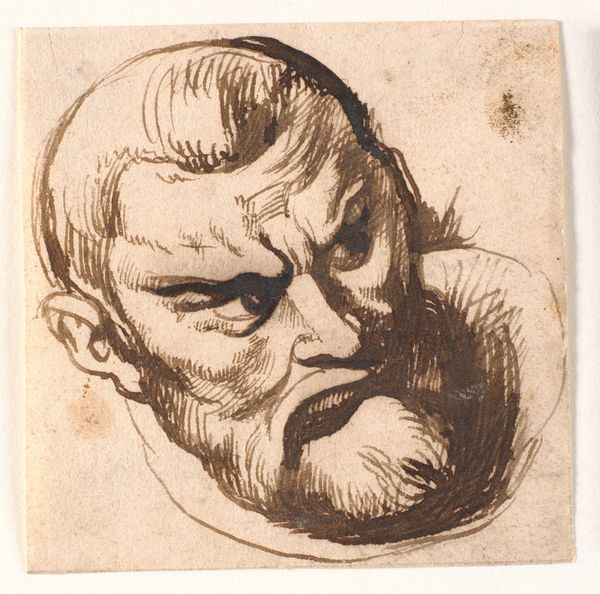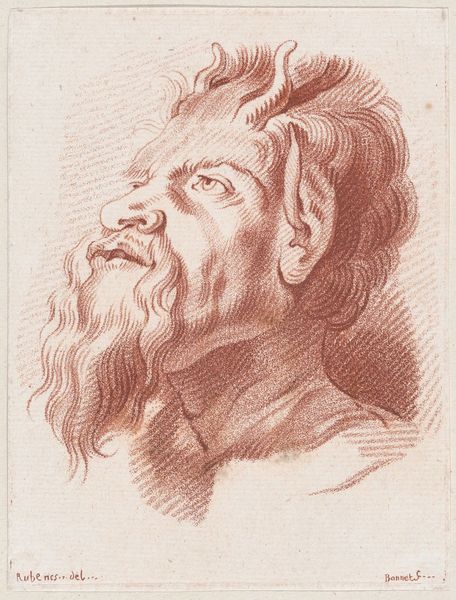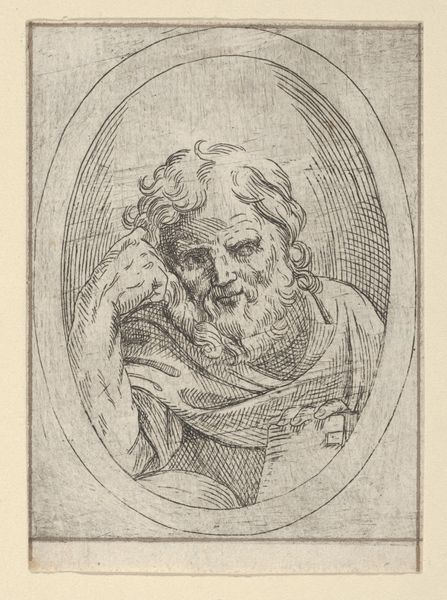
drawing, print, paper, chalk, graphite
#
portrait
#
drawing
# print
#
caricature
#
figuration
#
paper
#
coloured pencil
#
chalk
#
graphite
#
history-painting
#
academic-art
#
watercolor
Dimensions: 281 × 215 mm
Copyright: Public Domain
Editor: Here we have "Horrour," by Eduardus Jacobus, created sometime after 1698. It's a drawing and print on paper, a study of a face consumed by… well, "horrour," as the title suggests. The raw emotion practically jumps off the page, doesn't it? The red chalk really amplifies that sense of flushed, intense feeling. What do you see when you look at this piece? Curator: Immediately, the semiotic interplay between text and image arrests my attention. The misspelling of "Horrour," with that archaic double "r," introduces a structural discordance. Observe how this immediately primes the viewer for the exaggeration and distortion within the figuration itself. Note how Jacobus meticulously renders the musculature around the eyes and mouth; consider this as a codified system for conveying specific affective states. The redness reinforces the physiological manifestation of extreme emotion. Is it not compelling how the very materiality of the piece enhances this message? Editor: It is, definitely. The redness really heightens the feeling. It's interesting that you focus on the text, though. I was so drawn to the expression itself that I almost overlooked it. Curator: Precisely! The initial textual disruption draws us into the systematic distortion present within the lines themselves. Consider, as well, the almost diagrammatic inscription at the bottom – it almost offers a structural key to unlock the horror being presented. How do you see that related to the drawing? Editor: It feels like the artist is dissecting the emotion, trying to break it down into its components, like a scientist might. The description really gets granular and technical! Curator: An insightful reading. Indeed, it brings to mind the burgeoning scientific interest in mapping human emotions. It compels one to think about the very nature of horror and its structural presentation in art. I find the visual tension and semantic complexity layered within this composition particularly poignant. Editor: I never would have looked so closely at those small elements. Thanks for showing me the artist’s technical language. It feels like there's always more to uncover than you initially think.
Comments
No comments
Be the first to comment and join the conversation on the ultimate creative platform.
